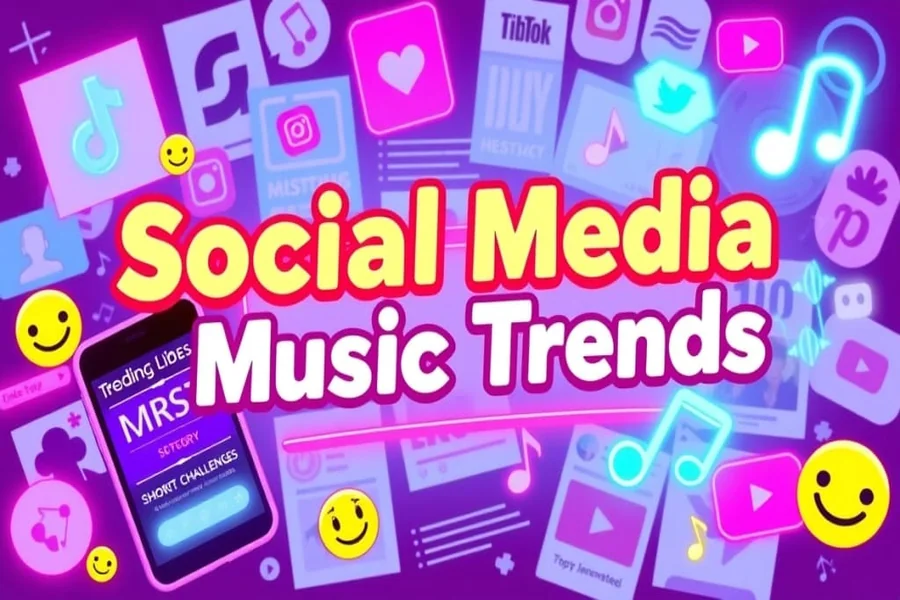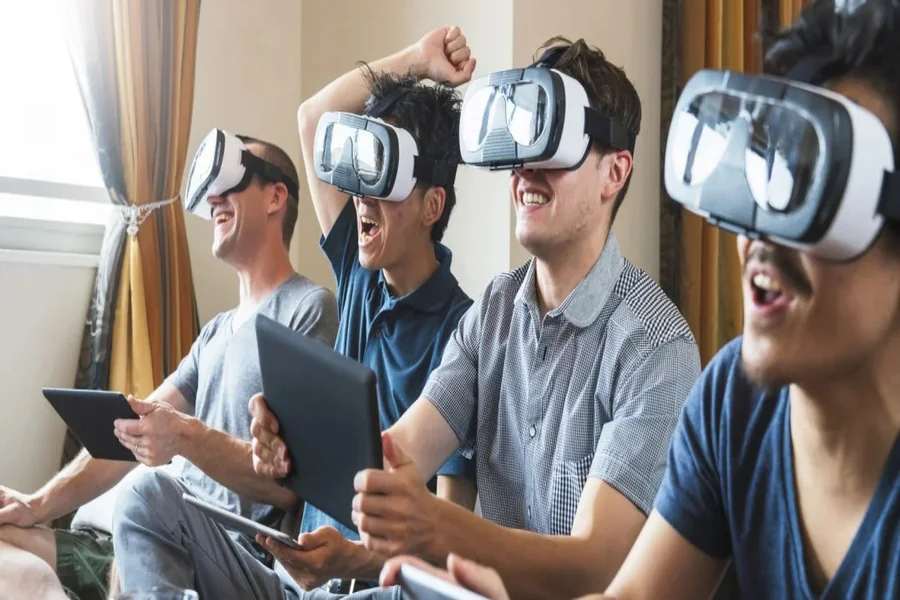In the past few decades, social media has radically transformed almost every aspect of modern life, and the music industry is no exception. Once upon a time, new music trends were dictated largely by radio stations, music magazines, and the traditional recording industry. Today, social media platforms such as Instagram, TikTok, YouTube, Twitter, and Spotify are at the forefront of shaping music trends, driving popularity, and influencing the way music is created, shared, and consumed.
From viral TikTok challenges to influencer-driven music promotion, social media has made music more accessible, democratized, and interactive than ever before. But what exactly is the impact of social media on music trends? How does it shape the music we listen to, the artists we follow, and the overall culture surrounding music? This article dives into the ways in which social media has revolutionized music trends, from how songs go viral to the rise of music influencers and the creation of new genres and subcultures.
The Role of Social Media in Music Discovery
Discovering New Artists and Genres
One of the most significant impacts social media has had on music trends is how it has transformed music discovery. Previously, people relied on traditional radio, TV channels, or music stores to discover new songs or artists. Today, social media platforms provide an endless stream of new music that users can access instantly.
Platforms like Instagram and TikTok offer a space for musicians to share their work directly with their audience, bypassing the traditional gatekeepers like record labels and radio stations. An artist no longer needs to be signed to a major label to get noticed. Instead, independent musicians and underground genres can flourish thanks to social media’s ability to amplify their voices.
For example, TikTok has become a major platform for music discovery, with songs regularly going viral after being featured in user-created videos. It’s common for lesser-known songs to gain massive traction through viral challenges or memes. Artists like Lil Nas X, Doja Cat, and Olivia Rodrigo owe much of their success to TikTok’s power to introduce music to a wide, engaged audience. TikTok’s ability to turn an unknown song into a global hit has redefined the traditional music industry model.
User-Generated Content and Music Virality
User-generated content is a powerful driver of music virality. As millions of users on platforms like TikTok, Instagram Reels, and Snapchat post videos that incorporate specific songs, these tracks have the potential to go viral. Songs that are featured in viral challenges or trends can reach millions of people in a matter of days, sometimes leading to mainstream success.
For instance, Drake’s “In My Feelings” went viral in 2018 due to the viral #InMyFeelingsChallenge on Instagram and TikTok. This kind of organic promotion through user-created content is a testament to how social media can drive music trends, making songs popular long before they hit traditional charts. The viral nature of music through social media has fundamentally changed the way songs break into the mainstream.
Social Media Influencers and Music Promotion
The Rise of Music Influencers
Influencers on social media platforms are now a significant part of music promotion. In many cases, these influencers have more power than traditional radio stations or music publications in shaping what songs or artists become popular. Whether they are fashion influencers, lifestyle vloggers, or other kinds of social media celebrities, influencers are helping to shape what’s trendy in music by sharing songs, promoting artists, and curating playlists.
For instance, Instagram influencers often share the music they’re listening to in posts or stories, giving lesser-known artists a chance to be discovered by their millions of followers. The same applies to YouTube influencers, who often integrate music into their content—whether it’s by creating dance routines or featuring certain songs in their videos. The influence of social media influencers on music trends cannot be overstated, as they help drive the visibility of songs and artists.
Paid Partnerships and Sponsored Content
Social media influencers, especially those on platforms like Instagram and YouTube, have long been collaborating with music brands, artists, and record labels to promote new releases. These paid partnerships play a crucial role in pushing songs into the public consciousness.
Artists and record labels often approach influencers to promote new tracks, albums, or merchandise. By leveraging an influencer’s established audience, artists can reach a targeted group of listeners more efficiently than traditional methods. For example, a well-placed Instagram post or TikTok video featuring a song can lead to significant increases in streams and downloads on platforms like Spotify or Apple Music, making influencers an essential tool in modern music marketing strategies.
Social Media and the Democratization of Music Production
Access to Music Tools and Platforms
Social media has also democratized the process of music production, allowing independent artists to create and distribute music without the need for expensive studio time or backing from major record labels. Platforms like SoundCloud, Bandcamp, and YouTube allow artists to upload their music directly to the internet and share it with a global audience.
Additionally, programs like Ableton, Logic Pro, and even GarageBand have made music production more accessible to aspiring musicians. These tools allow artists to create professional-quality music from the comfort of their homes. The rise of bedroom pop and other home-produced genres is directly linked to this shift in music production accessibility, with social media serving as the vehicle through which artists showcase their work.
For example, Billie Eilish, one of the most successful pop stars of recent years, initially gained attention for music she recorded with her brother Finneas in their bedroom. Thanks to platforms like SoundCloud and YouTube, artists like Eilish have the opportunity to find a global audience without needing to rely on traditional music industry gatekeepers.
Collaboration and Innovation
Social media also fosters collaboration, which in turn fuels musical innovation. Artists from different parts of the world can collaborate seamlessly through platforms like Instagram and TikTok, sharing ideas and music with others who have similar interests or followings. Hashtags, trends, and viral challenges bring artists together, allowing them to experiment with different genres, sounds, and cultural influences. These collaborations have led to the creation of entirely new musical styles, genres, and trends.
For example, the blending of Latin, reggaeton, and trap music in the mainstream is partly the result of global artists collaborating through social media. Artists like Bad Bunny, J Balvin, and Daddy Yankee have used their social media presence to introduce new musical genres to global audiences, paving the way for a more international and multicultural music scene.
The Influence of Music Streaming and Playlists
Curated Playlists and Trends
Platforms like Spotify, Apple Music, and YouTube Music have made it easier than ever to discover music based on personal preferences, but they also have a huge impact on shaping music trends. These platforms offer curated playlists that are regularly updated with trending songs, emerging artists, and popular genres.
Playlists like Spotify’s “Today’s Top Hits” or Apple Music’s “Best of the Week” play a huge role in what becomes popular in the music world. When a song is added to a popular playlist, it can lead to massive increases in streams, pushing that song up the charts and into the public consciousness. Artists often see their tracks go viral as they gain exposure through these curated lists, with playlist curators acting as trendsetters.
Algorithm-Driven Discovery
Streaming services also use algorithms to suggest music to users, which can sometimes introduce listeners to new and emerging genres or artists that they might not have discovered otherwise. Spotify’s Discover Weekly and Release Radar playlists are great examples of how algorithms can help music listeners find new trends. This personalized experience also helps artists gain recognition based on their musical style, encouraging listeners to explore new sounds and up-and-coming genres.
For instance, indie pop, hyperpop, and other niche genres have grown in popularity thanks to Spotify’s algorithmic recommendations. The democratization of music through these platforms allows more artists to be heard, pushing forward new trends and sounds that would have previously been overlooked by traditional radio and record labels.
Music-Driven Social Movements
Social Media as a Platform for Political and Social Change
In addition to shaping music trends, social media has also been instrumental in using music as a tool for political and social change. Artists use their platforms to raise awareness of important issues and advocate for social justice, with music often playing a central role in these efforts.
For example, Beyoncé’s “Formation” and Childish Gambino’s “This Is America” used their music videos and songs to address racial inequality, police brutality, and other pressing social issues. These songs went viral thanks to their powerful visuals and politically charged messages, making them key components of broader social movements.
The Role of Music in Cultural Movements
The global success of K-pop, for instance, is not just a reflection of catchy tunes but also the way the genre has used social media to advocate for cultural pride and unity. K-pop artists and fans use platforms like Twitter, Instagram, and TikTok to spread their messages, organize protests, and support social causes, demonstrating the interconnectedness between music and social media movements.
Conclusion
The influence of social media on music trends cannot be overstated. From music discovery and viral challenges to algorithm-driven recommendations and global collaborations, social media has changed the way we create, share, and consume music. The industry has become more accessible to both established artists and newcomers, while fans are now integral to the process of shaping what becomes popular. As social media continues to evolve, its role in shaping music trends will undoubtedly continue to grow, further blurring the lines between artists, fans, and the cultural movements that music both reflects and drives.




